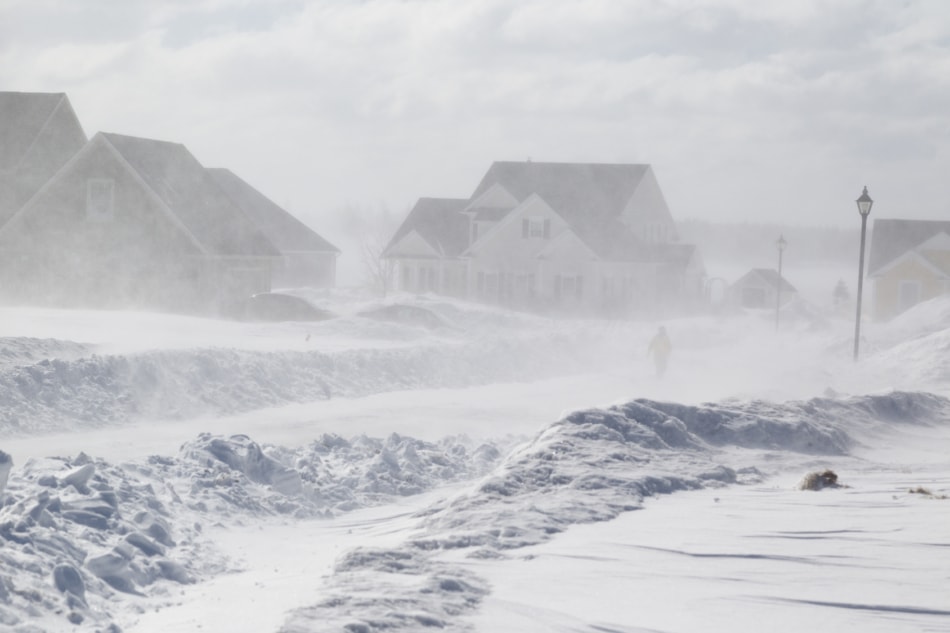

These factors include access to more moisture (which raises precipitation amounts), slower system movement (which increases snowfall duration), and colder temperatures (which increases the snow to water ratio). However, several factors could combine to produce higher snow accumulations (6 inches/15 cm or more). Snowfall amounts with these systems tend to be small (on the order of 1 to 3 inches or 2.5 to 7.5 cm), as the relative lack of moisture and quick movement inhibit substantial snowfall totals. These conditions would cause wind chill values to drop into the -30 to -45 Celsius (-20 to -50 Fahrenheit) range. Winds in advance of and during an Alberta clipper are frequently as high as 56 to 72 km/h (35 to 45 mph). Often, the storms bring biting winds with them, only increasing the effect of the lower temperatures. It is not uncommon for an Alberta clipper to cause temperatures to drop by 16 ☌ (30 ☏) in as little as 10 to 12 hours. The storms sweep in at high speed over whatever land they encounter, usually bringing with them sharp cold fronts and drastically lower temperatures. Ironically, the chinook which in part originates the Alberta clipper usually brings relatively warm weather (often approaching 10C/50F in the depths of winter) to southern Alberta itself, and the term is therefore not used in Alberta.

The storm then slides southward and gets caught up in the jet stream, sending the storm barreling into central and eastern areas of North America. The air travels down the lee side of the mountains, often forming a chinook in Alberta, then develops into a storm over the Canadian prairies when it becomes entangled with the cold air mass that normally occupies the region in winter. Typical winter storm tracks in Minnesota.Ī clipper originates when warm, moist winds from the Pacific Ocean come into contact with the mountains in the provinces of British Columbia and then Alberta.


 0 kommentar(er)
0 kommentar(er)
